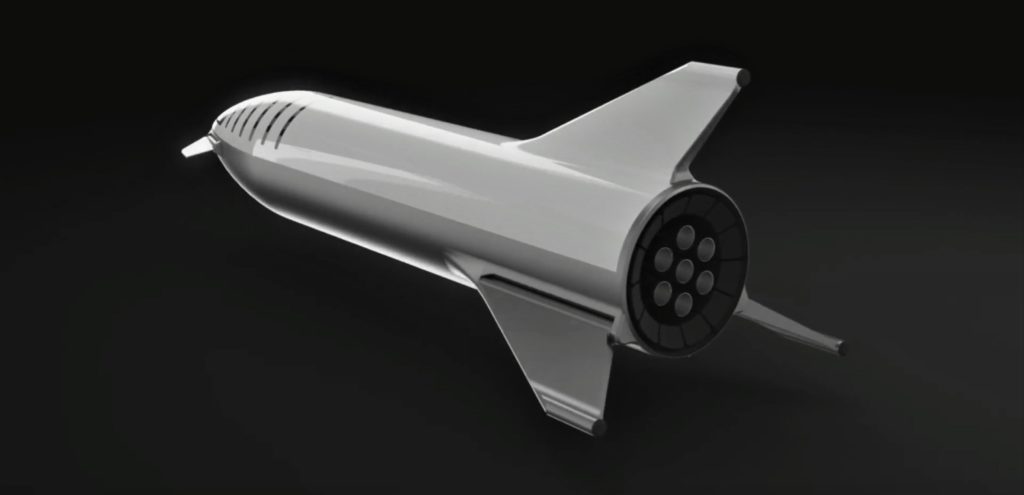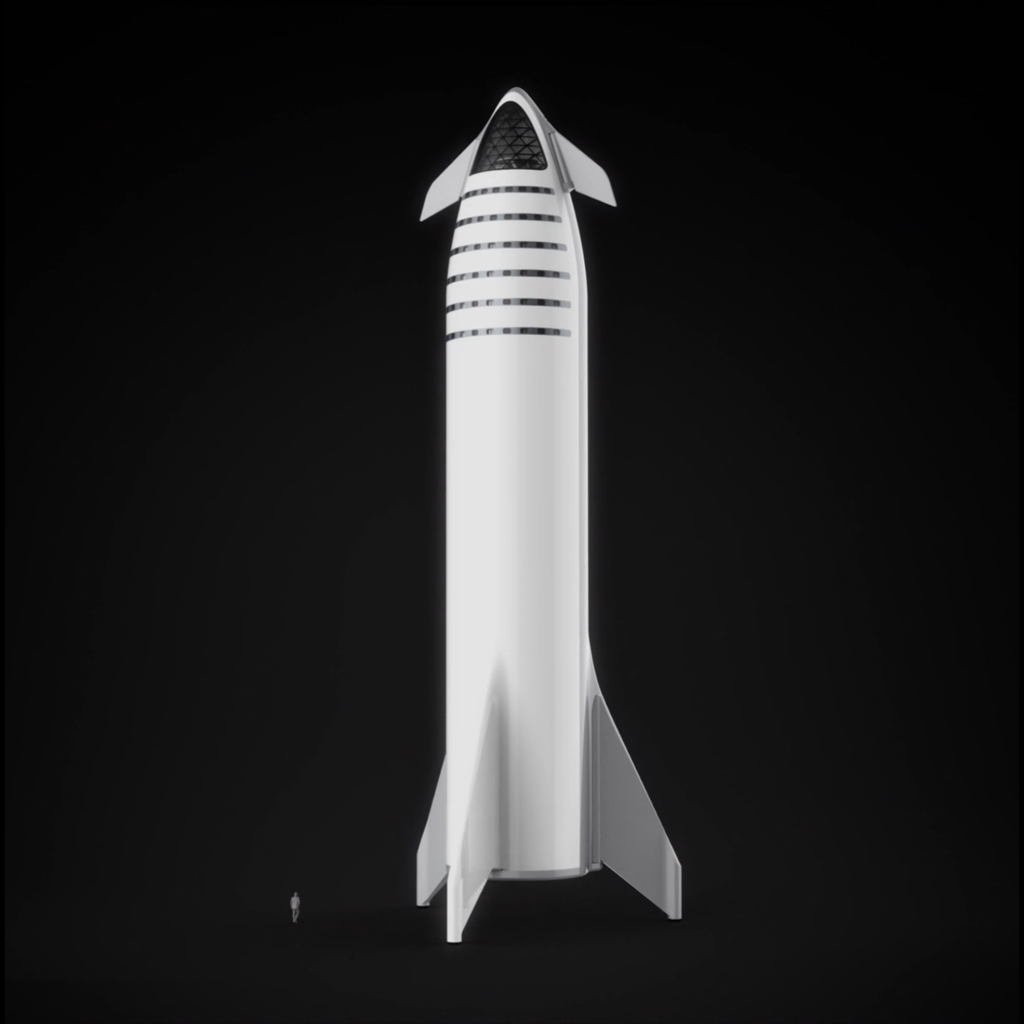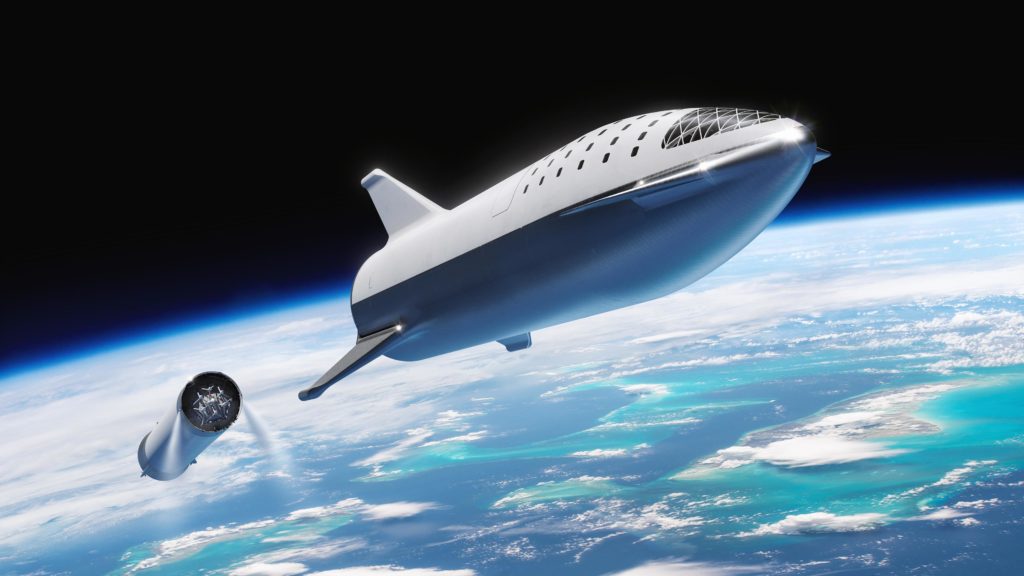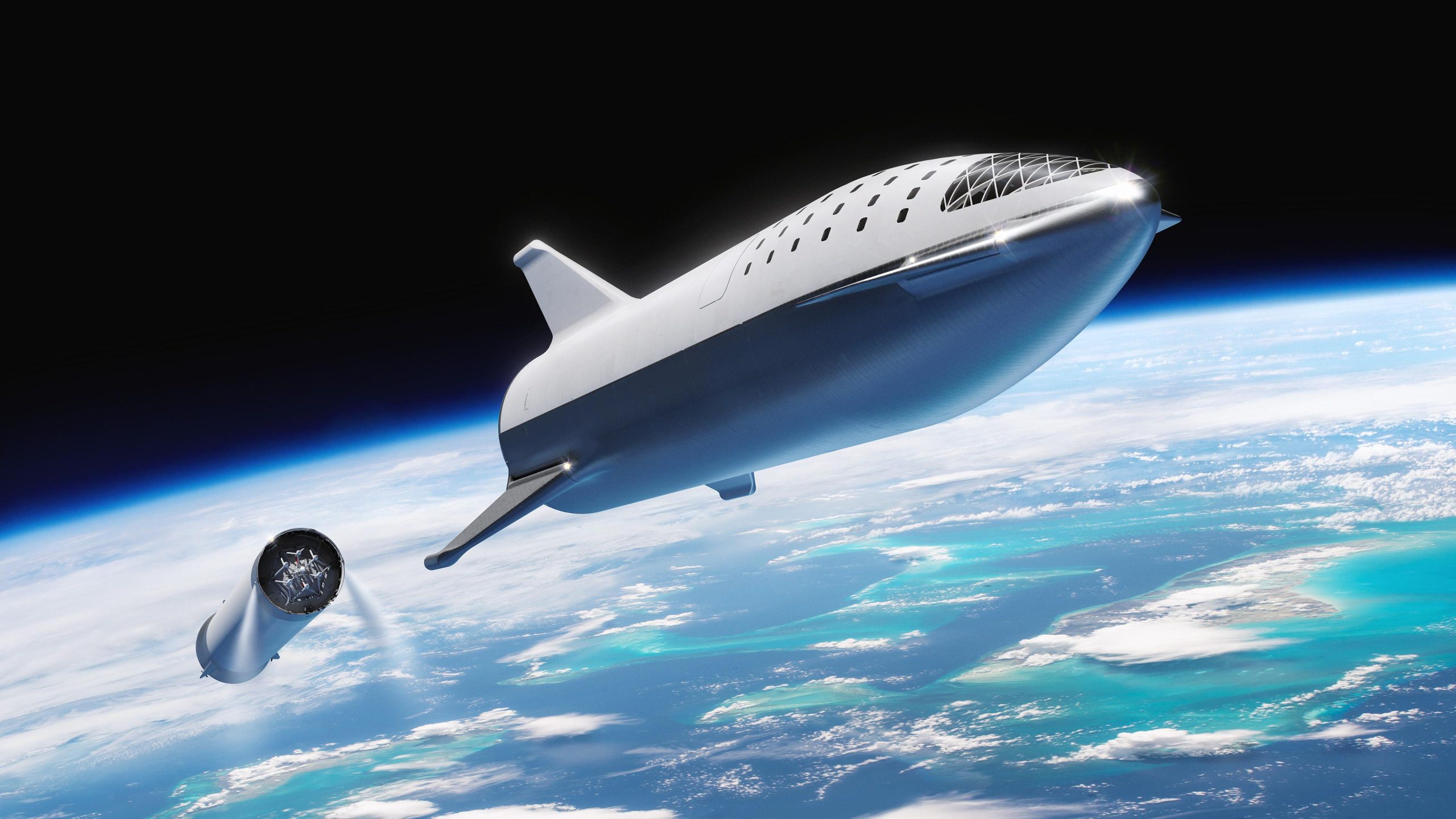
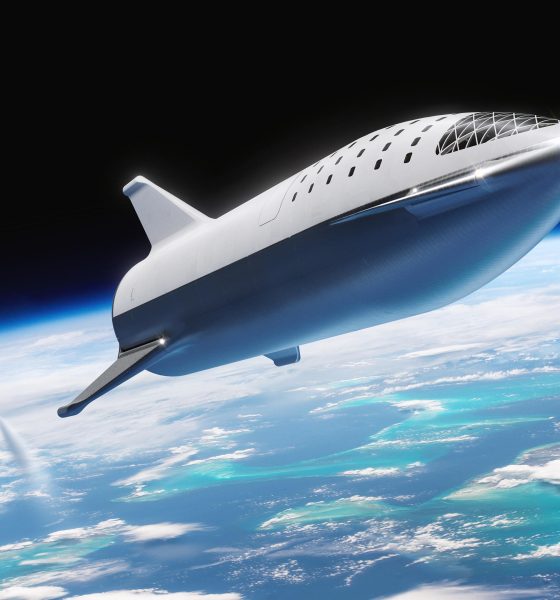
News
SpaceX wants to land its BFR spaceships “like a skydiver” on Earth and Mars
Speaking at the company’s Hawthorne factory, SpaceX CEO Elon Musk announced a new strategy for efficiently recovering its next-gen BFR’s upper stage, describing a process where the spaceship would rely on a number of unintuitive techniques to reliably land on planets or moons with appreciable atmospheres (i.e. Mars, Earth, Titan). In essence, BFS would end up gliding towards the surface in free-fall, controlling its orientation much like an Earthly skydiver.
True physics sim: Very high angle of attack during landing. pic.twitter.com/J0HouiUfPg
— NSF – NASASpaceflight.com (@NASASpaceflight) September 18, 2018
Several times throughout the BFR update and private lunar tourism announcement, Musk emphasized just how unintuitive the new procedures would be, stating that “it’s not like anything that people are familiar with – it’s not like an airplane.” His comparison with skydivers is actually rather apt for conveying why this approach is so unusual for a large, flying vehicle like BFR’s spaceship (BFS). Just like skydivers, BFS will have five main control surfaces to control its orientation, pitch, and general dynamics when operating in an atmosphere – two forward fins (like a skydiver’s arms), two rear fins (legs), and a body.
Also like a skydiver, those forward and aft controls are not aerodynamic in the sense of an airplane’s wing or tail fins – in the case of the skydiver and spaceship, they do not generate lift – in pilot and aerospace parlance, a surface that generates no lift is “stalled”. This is likely the main reason that Musk was so intent on conveying his feeling that the spaceship’s new flight regime was unintuitive – in the world of aerospace engineering, particularly for aerodynamicists, intentionally designed stalled control surfaces is almost oxymoronic, akin to an automotive engineer designing a car with square wheels. For all but fighter pilots, stalled aerodynamic surfaces are traditionally avoided like the plague, and can be frequently blamed for aviation-related fatalities.
BFS Update: Thinks they can get to 1100 m3 volume. Actuated fins/flaps. Control surfaces. pic.twitter.com/XNw3Yg0Fcq
— NSF – NASASpaceflight.com (@NASASpaceflight) September 18, 2018
Even to a layperson, the spaceship landing animation shown might look more like a rock uncontrollably plummeting to the ground than an advanced spaceship meant to land humans on Earth, Mars, and beyond. In essence, the proposal Musk laid out on September 17th takes the high-speed reentry characteristics of NASA’s retired Space Shuttle (aerobraking, S-turns, nose-up reentry), adopts a skydiver’s intuitive and efficient aerodynamic control scheme in free-fall, and replaces said skydiver’s parachutes with a group of high-performance rocket engines, as if a skydiver somehow managed to strap rockets to their feet to gently land on the ground.
SpaceX should have little trouble with the latter task thanks to 15 successful vertical landings of Falcon 9 and Falcon Heavy boosters (and many more to come), while the spaceship’s Shuttle-style orbital reentry profile may be new for SpaceX but has been tackled successfully in the past by other companies/agencies. Free-falling to a successful landing with permanently stalled control surfaces, however, will undoubtedly demand an extensive test campaign in Earth’s atmosphere before SpaceX even thinks of placing humans on the craft, something that Musk foreshadowed in a 2017 Reddit AMA focused on BFR.
“Will be starting with a full-scale Ship doing short hops of a few hundred kilometers altitude and lateral distance. Those are fairly easy on the vehicle as no heat shield is needed.” – Elon Musk, October 2017
- (SpaceX)
- BFS seen standing vertically on the pads of its tripod fins. (SpaceX)
- BFR’s spaceship and booster (now Starship and Super Heavy) separate in a mid-2018 render of the vehicle. (SpaceX)
BFR’s design and the spaceship’s recovery profile may change further over the next 6-12 months, given that the team’s unintuitive freefall realization seems to be a fresh addition to the Mars rocket. Nevertheless, Musk and COO Gwynne Shotwell have publicly stated that they believe Grasshopper-style spaceship hop tests could commence as early as late 2019 or early 2020, with the first orbital BFR launches starting soon after in the 2020/2021 timeframe.
For prompt updates, on-the-ground perspectives, and unique glimpses of SpaceX’s rocket recovery fleet check out our brand new LaunchPad and LandingZone newsletters!

News
Tesla discloses interesting collaboration partner for Supercharging
This BOXABL collaboration would be a great way to add a rest stop to a rural Supercharging location, and could lead to more of these chargers across the U.S.
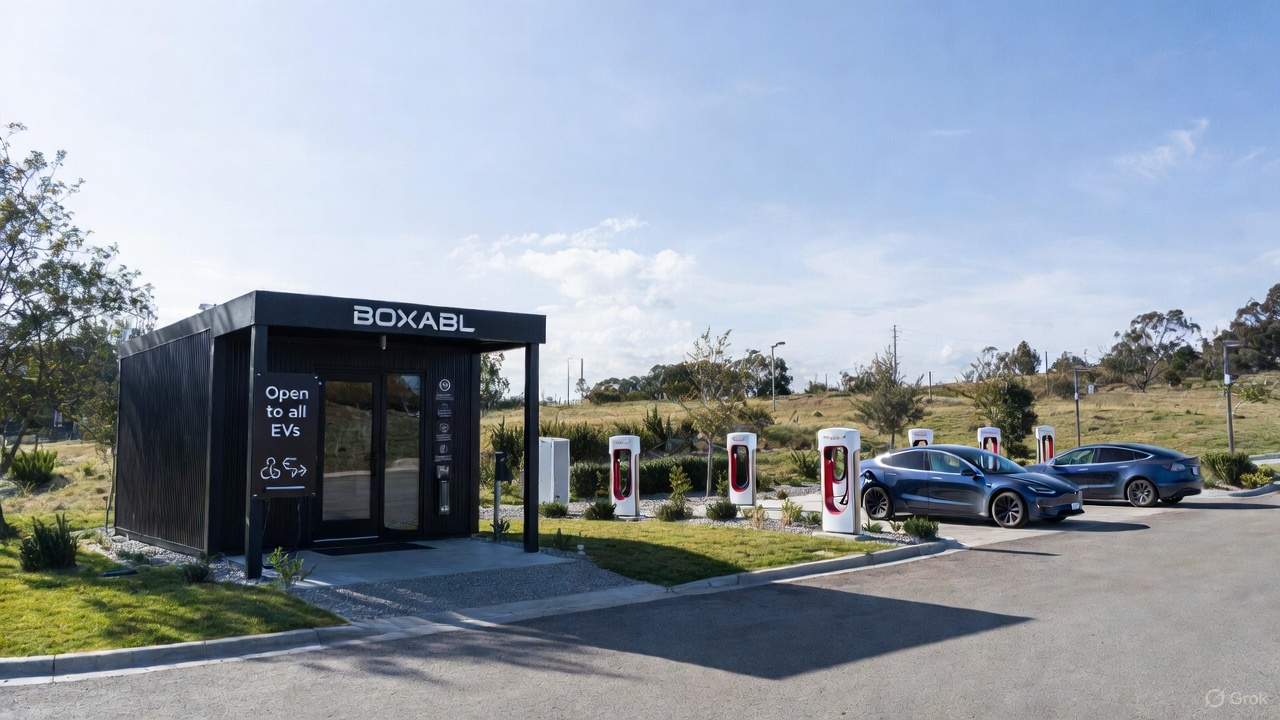
Tesla disclosed an interesting collaboration partner in an SEC filing, which looks like an indication of a potential project at Supercharger sites.
Tesla said on Tuesday in the filing that it was entering an agreement with BOXABL to design and build a Micromenity structure. Simply put, this is a modular building, usually a few hundred square feet in size, and it has been seen at Superchargers in Europe.
In Magnant, France, Tesla opened a small building at a Supercharger that is available to all EV owners. There are snacks and drinks inside, including ice cream, coffee, a gaming console, and restrooms. It gives people an opportunity to get up and out of their cars while charging.
This building was not built by BOXABL, but instead by bk World Lounges. It is likely the final Supercharging stop before people get to Paris, as it is located 250 kilometers, or 155 miles, from the City of Light.
Voir cette publication sur Instagram
Magnant has 56 stalls, so it is a large Supercharging stop compared to most. The building could be a sign of things to come, especially as Tesla has opened up larger Supercharger stations along major roadways.
It is for just a single building, as the Scope of Work within the filing states “a comprehensive package for one Micromenity building.”
NEWS: BOXABL, a company that creates modular, prefabricated buildings, has entered into an agreement with @Tesla.
This is Tesla formally contracting BOXABL to design, engineer, and build a pilot “Micromenity” structure, a compact, modular building unit.
While some info in the… pic.twitter.com/RabJczGpEp
— Sawyer Merritt (@SawyerMerritt) December 9, 2025
Superchargers are commonly located at gas stations, shopping centers, and other major points of interest. However, there are some stops that are isolated from retail or entertainment.
This BOXABL collaboration would be a great way to add a rest stop to a rural Supercharging location, and could lead to more of these chargers across the U.S.
Tesla has done a lot of really great things for Supercharging this year.
Along with widespread expansion, the company launched the “Charging Passport” this week, opened the largest Supercharger in the world in Lost Hills, California, with 168 chargers, opened the Tesla Diner, a drive-in movie restaurant in Los Angeles, and initiated access to the infrastructure to even more automakers.
Elon Musk
Tesla CEO Elon Musk confirms Robotaxi safety monitor removal in Austin: here’s when
Musk has made the claim about removing Safety Monitors from Tesla Robotaxi vehicles in Austin three times this year, once in September, once in October, and once in November.

Tesla CEO Elon Musk confirmed on Tuesday at the xAI Hackathon that the company would be removing Safety Monitors from Robotaxis in Austin in just three weeks.
This would meet Musk’s timeline from earlier this year, as he has said on several occasions that Tesla Robotaxis would have no supervision in Austin by the end of 2025.
On Tuesday, Musk said:
“Unsupervised is pretty much solved at this point. So there will be Tesla Robotaxis operating in Austin with no one in them. Not even anyone in the passenger seat in about three weeks.”
Musk has made the claim about removing Safety Monitors from Tesla Robotaxi vehicles in Austin three times this year, once in September, once in October, and once in November.
In September, he said:
“Should be no safety driver by end of year.”
The safety driver is just there for the first few months to be extra safe.
Should be no safety driver by end of year.
— Elon Musk (@elonmusk) September 4, 2025
On the Q3 Earnings Call in October, he said:
“We are expecting ot have no safety drivers in at least large parts of Austin by the end of this year.”
Finally, in November, he reiterated the timeline in a public statement at the Shareholder Meeting:
“I expect Robotaxis to operate without safety drivers in large parts of Austin this year.”
Currently, Tesla uses Safety Monitors in Austin in the passenger’s seat on local roads. They will sit in the driver’s seat for highway routes. In the Bay Area ride-hailing operation, there is always a Safety Monitor in the driver’s seat.
Three weeks would deliver on the end-of-year promise, cutting it close, beating it by just two days. However, it would be a tremendous leap forward in the Robotaxi program, and would shut the mouths of many skeptics who state the current iteration is no different than having an Uber.
Tesla has also expanded its Robotaxi fleet this year, but the company has not given exact figures. Once it expands its fleet, even more progress will be made in Tesla’s self-driving efforts.
News
SpaceX reportedly mulling IPO, eyeing largest of all time: report
“I do want to try to figure out some way for Tesla shareholders to participate in SpaceX. I’ve been giving a lot of thought to how to give people access to SpaceX stock,” Musk said.
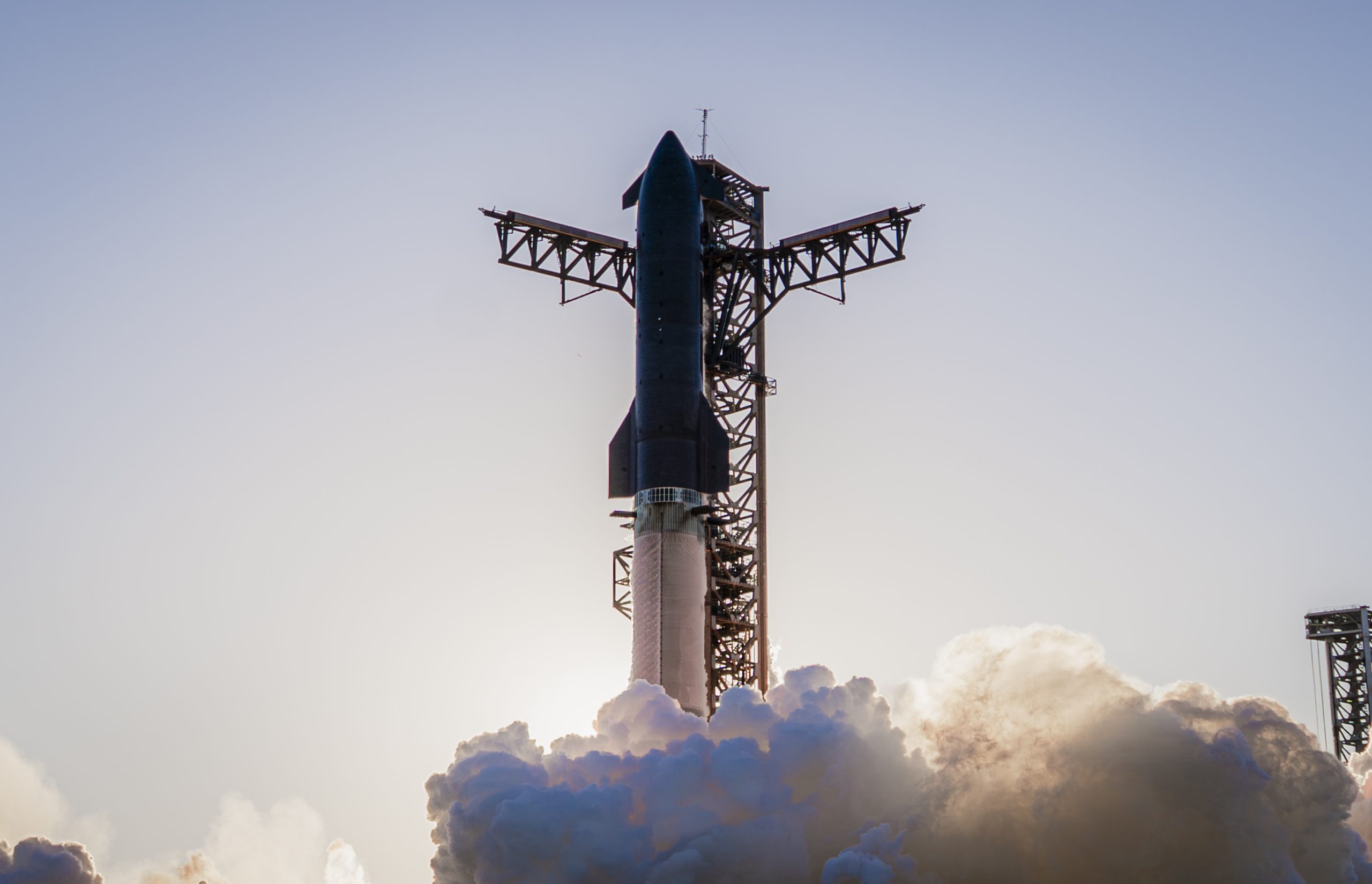
SpaceX is reportedly mulling an initial public offering, eyeing what would be the largest valuation at the time of availability of all time, a new report from Bloomberg said on Tuesday.
It is one of many reports involving one of Elon Musk’s companies and a massive market move, as this is not the first time we have seen reports of an IPO by SpaceX. Musk himself has also dispelled other reports in the past of a similar nature, including an xAI funding round.
SpaceX and Musk have yet to comment on the report. In the past, untrue reports were promptly replied to by the CEO; this has not yet gained any response, which is a good sign in terms of credibility.
However, he said just a few days ago that stories of this nature are inaccurate:
“There has been a lot of press claiming SpaceX is raising money at $800B, which is not accurate. SpaceX has been cash flow positive for many years and does periodic stock buybacks twice a year to provide liquidity for employees and investors. Valuation increments are a function of progress with Starship and Starlink and securing global direct-to-cell spectrum that greatly increases our addressable market. And one other thing that is arguably most significant by far.”
There has been a lot of press claiming @SpaceX is raising money at $800B, which is not accurate.
SpaceX has been cash flow positive for many years and does periodic stock buybacks twice a year to provide liquidity for employees and investors.
Valuation increments are a…
— Elon Musk (@elonmusk) December 6, 2025
Musk has discussed a potential IPO for SpaceX in recent months, as the November 6 shareholder meeting, as he commented on the “downsides” of having a public company, like litigation exposure, quarterly reporting pressures, and other inconveniences.
Nevertheless, Musk has also said he wants there to be a way for Tesla shareholders to get in on the action. At the meeting in early November, he said:
“I do want to try to figure out some way for Tesla shareholders to participate in SpaceX. I’ve been giving a lot of thought to how to give people access to SpaceX stock.”
Additionally, he added:
“Maybe at some point., SpaceX should become a public company despite all the downsides of being public.”
Musk has been historically reluctant to take SpaceX public, at times stating it could become a barrier to colonizing Mars. That does not mean it will not happen.
Bloomberg’s report cites multiple unidentified sources who are familiar with the matter. They indicate to the publication that SpaceX wants to go public in mid-to-late 2026, and it wants to raise $30 billion at a valuation of around $1.5 trillion.
This is not the first time SpaceX has discussed an IPO; we reported on it nine years ago. We hope it is true, as the community has spoken for a long time about having access to SpaceX stock. Legendary investor Ron Baron is one of the lucky few to be a SpaceX investor, and said it, along with Tesla, is a “lifetime investment.”
Tesla bull Ron Baron reveals $100M SpaceX investment, sees 3-5x return on TSLA
The primary driver of SpaceX’s value is Starlink, the company’s satellite internet service. Starlink contributes 60-70 percent of SpaceX’s revenue, meaning it is the primary value engine. Launch services, like Falcon 9 contracts, and the development of Starship, also play supporting roles.
